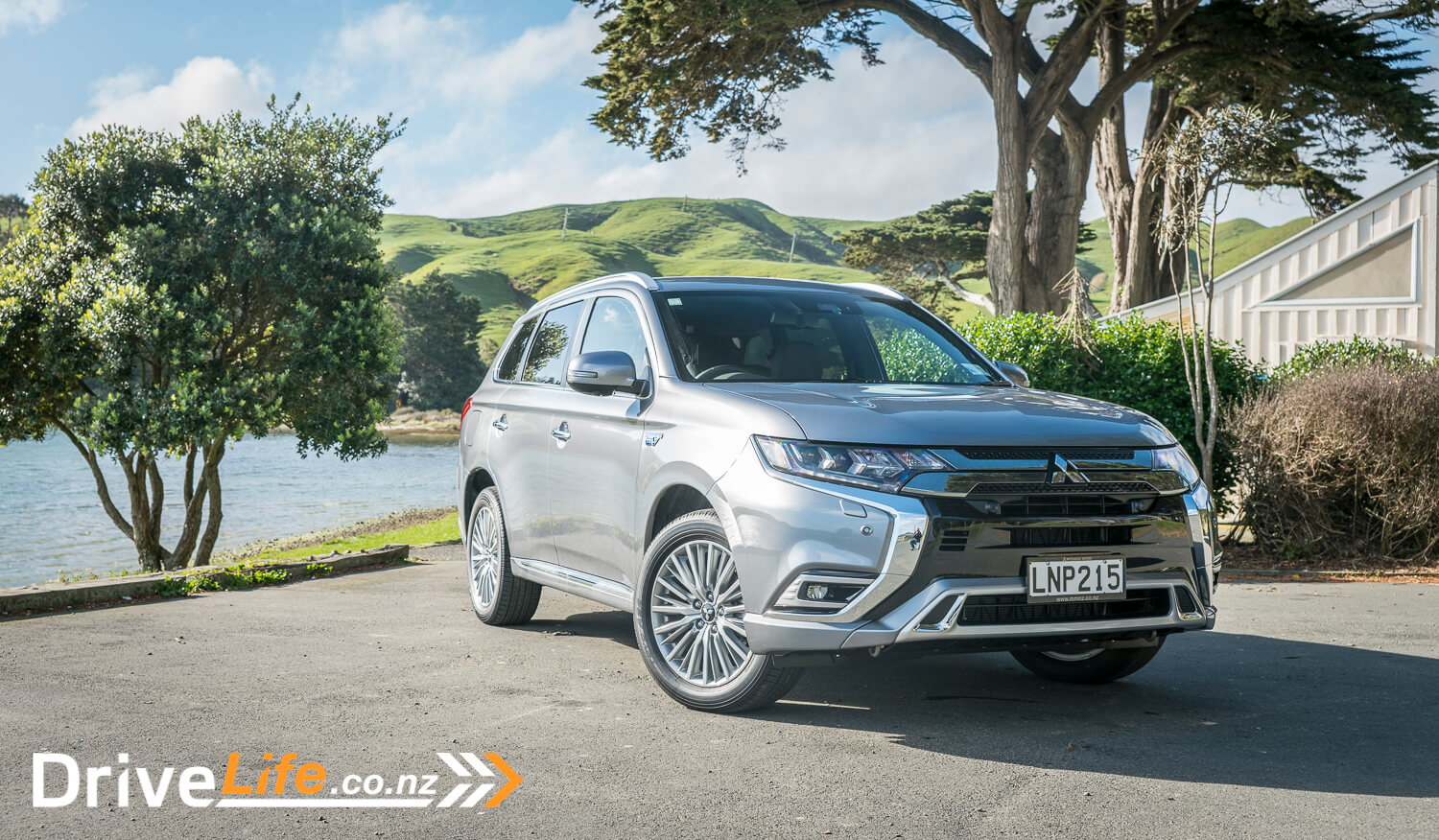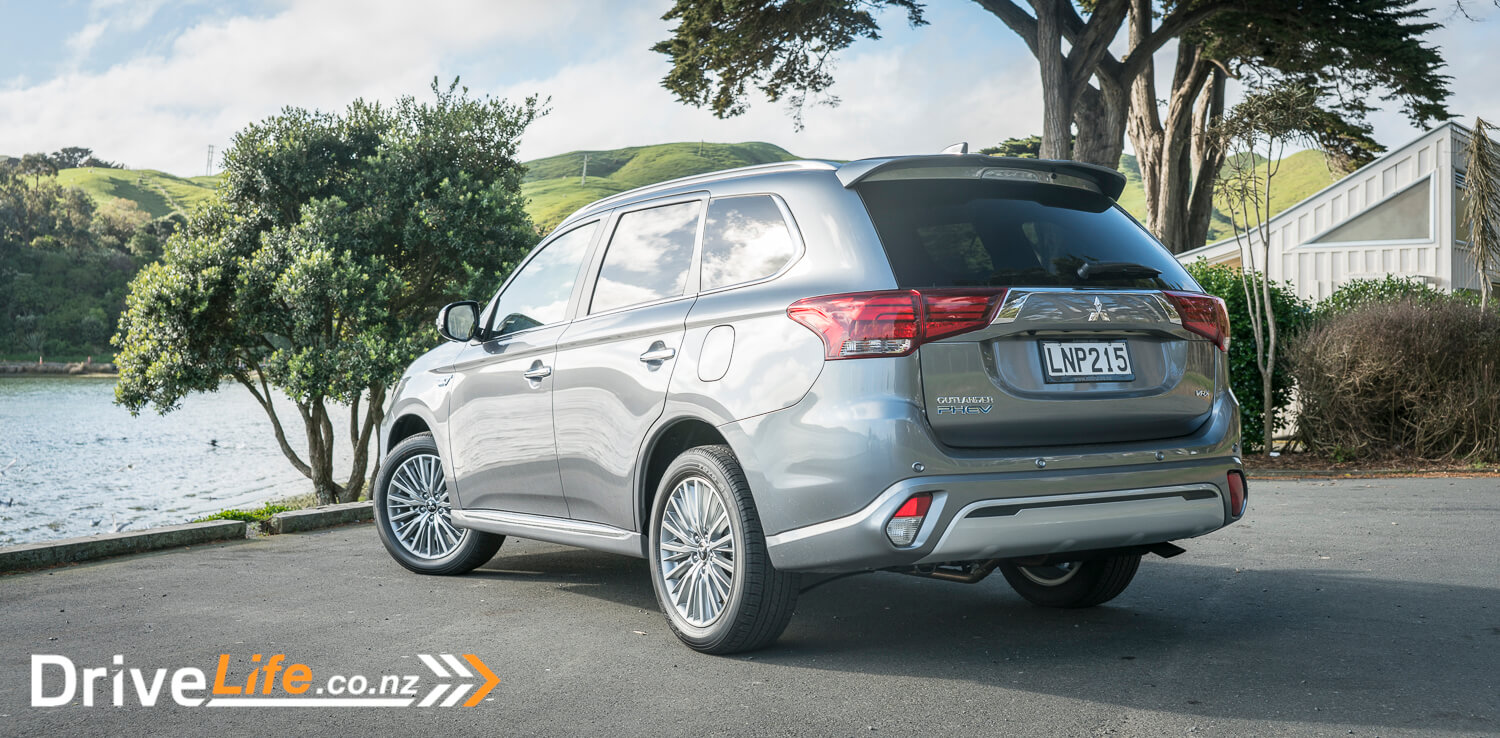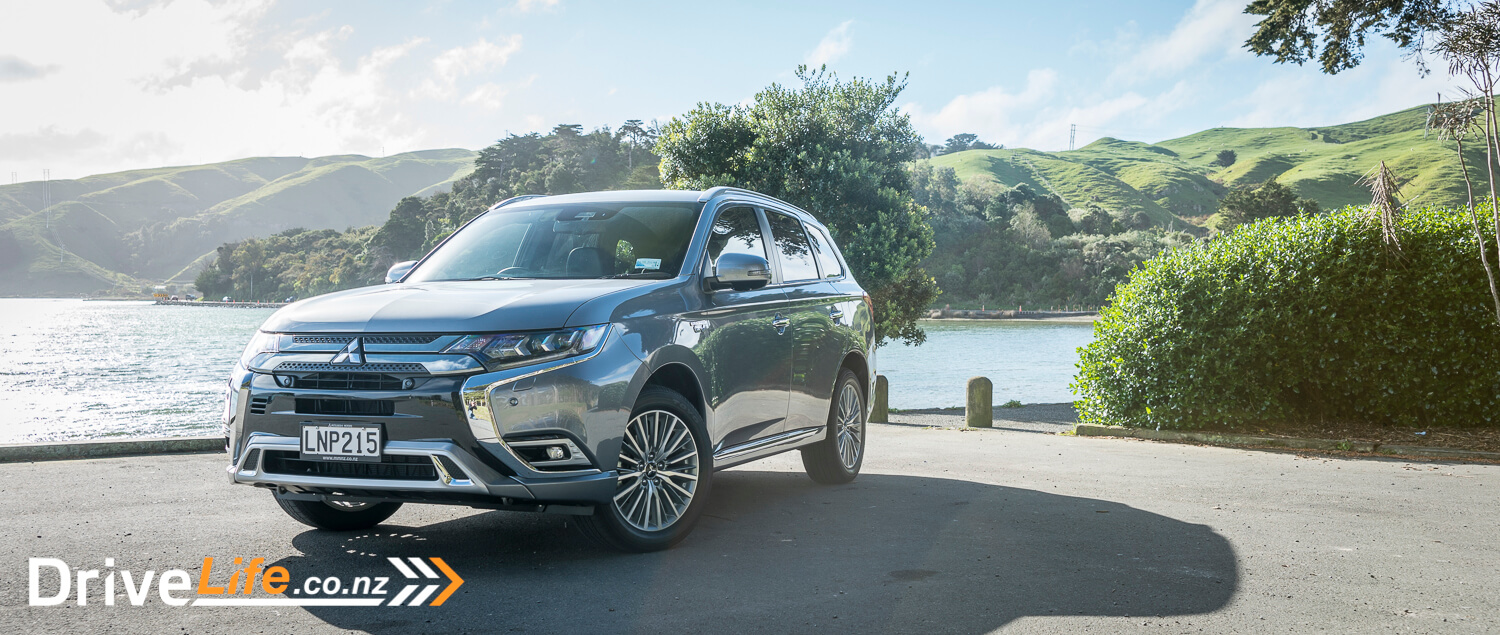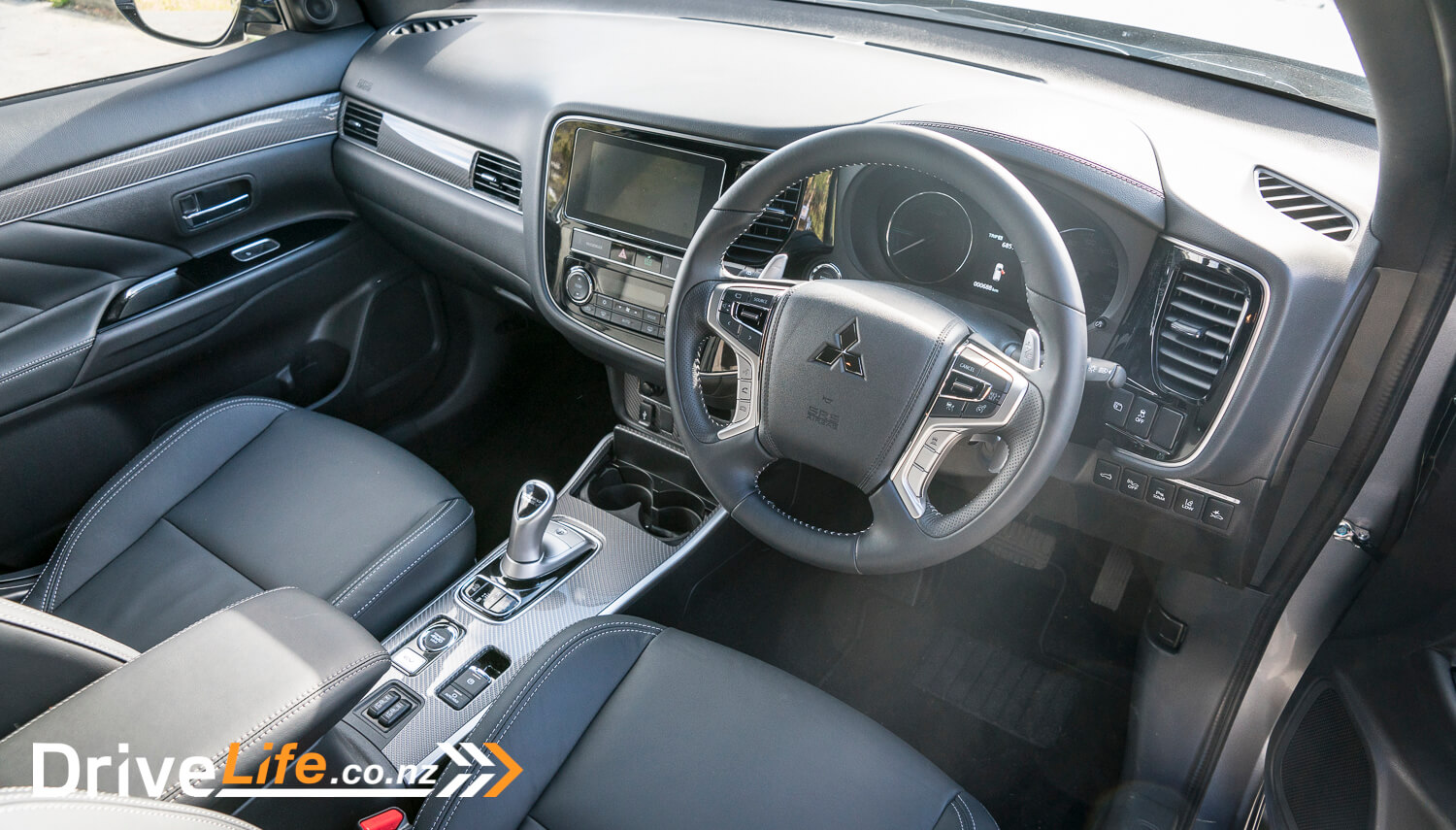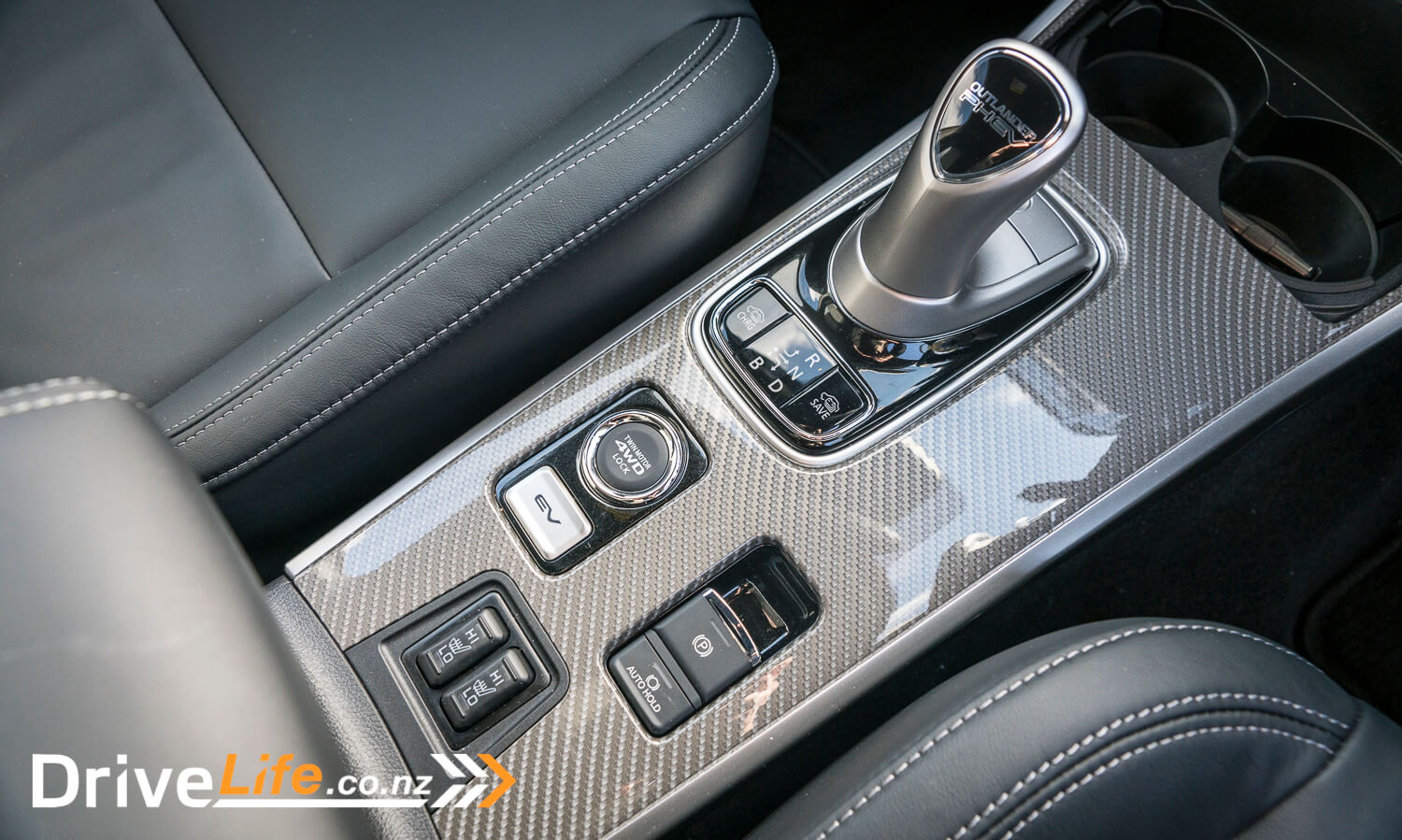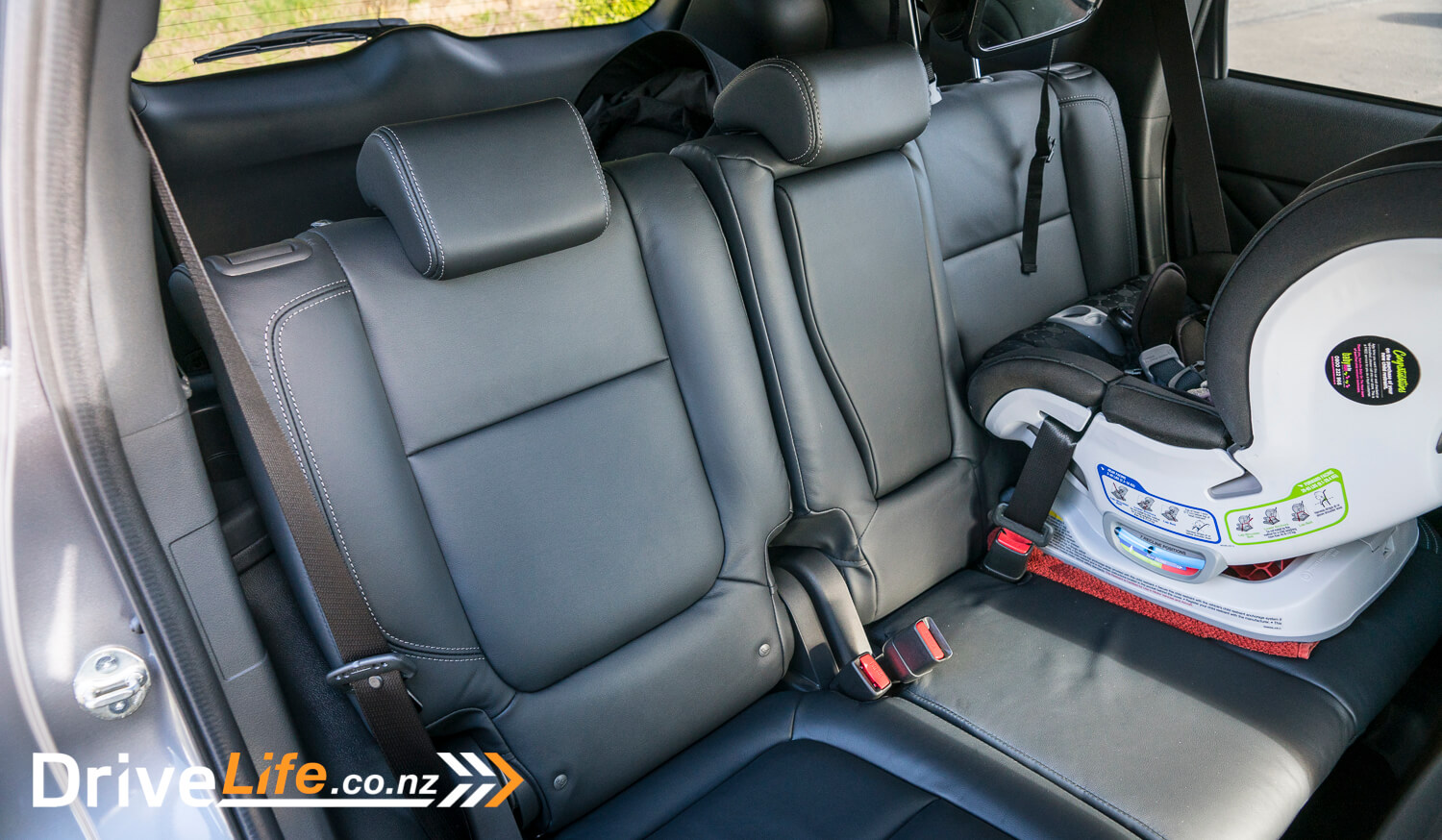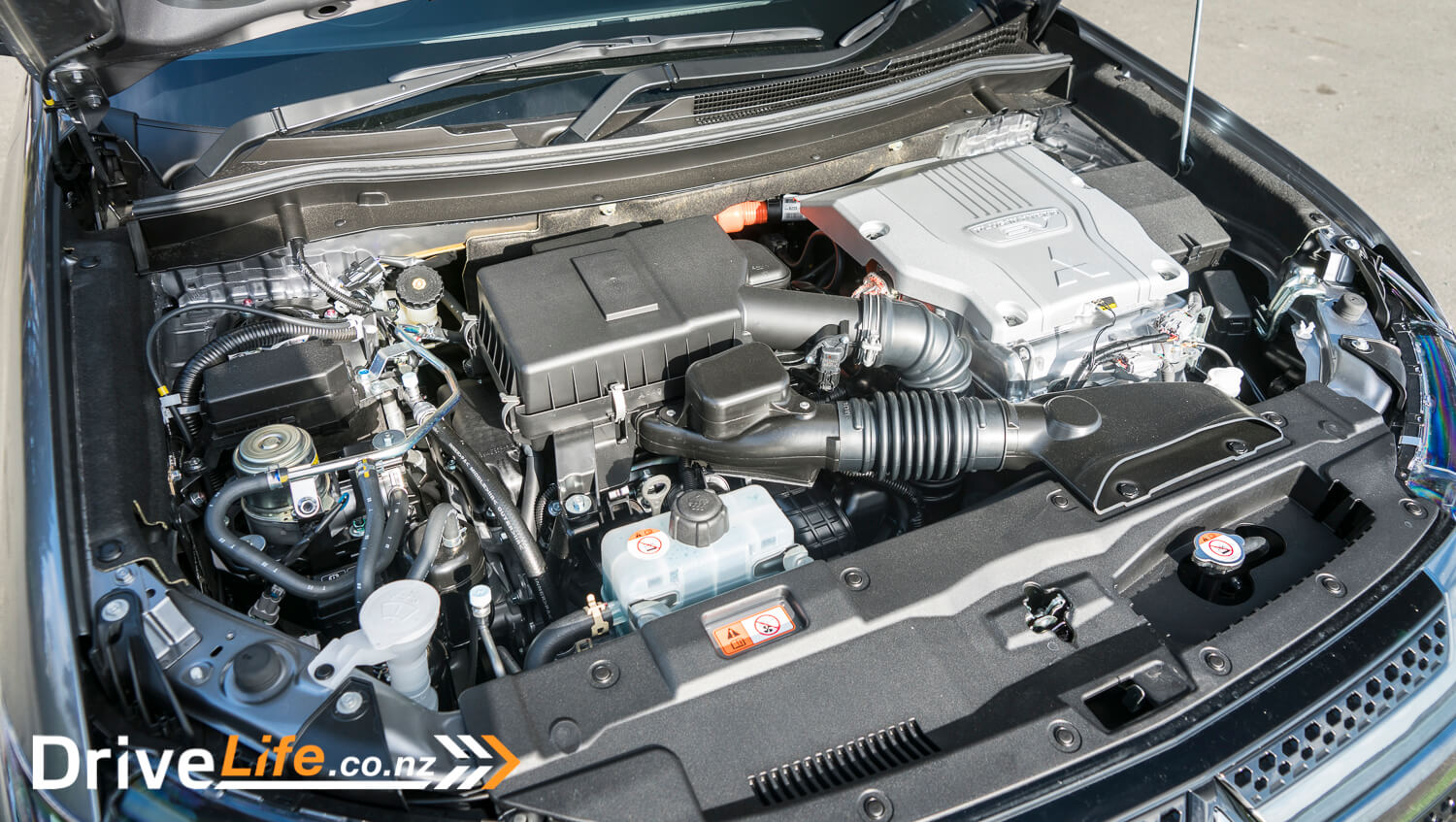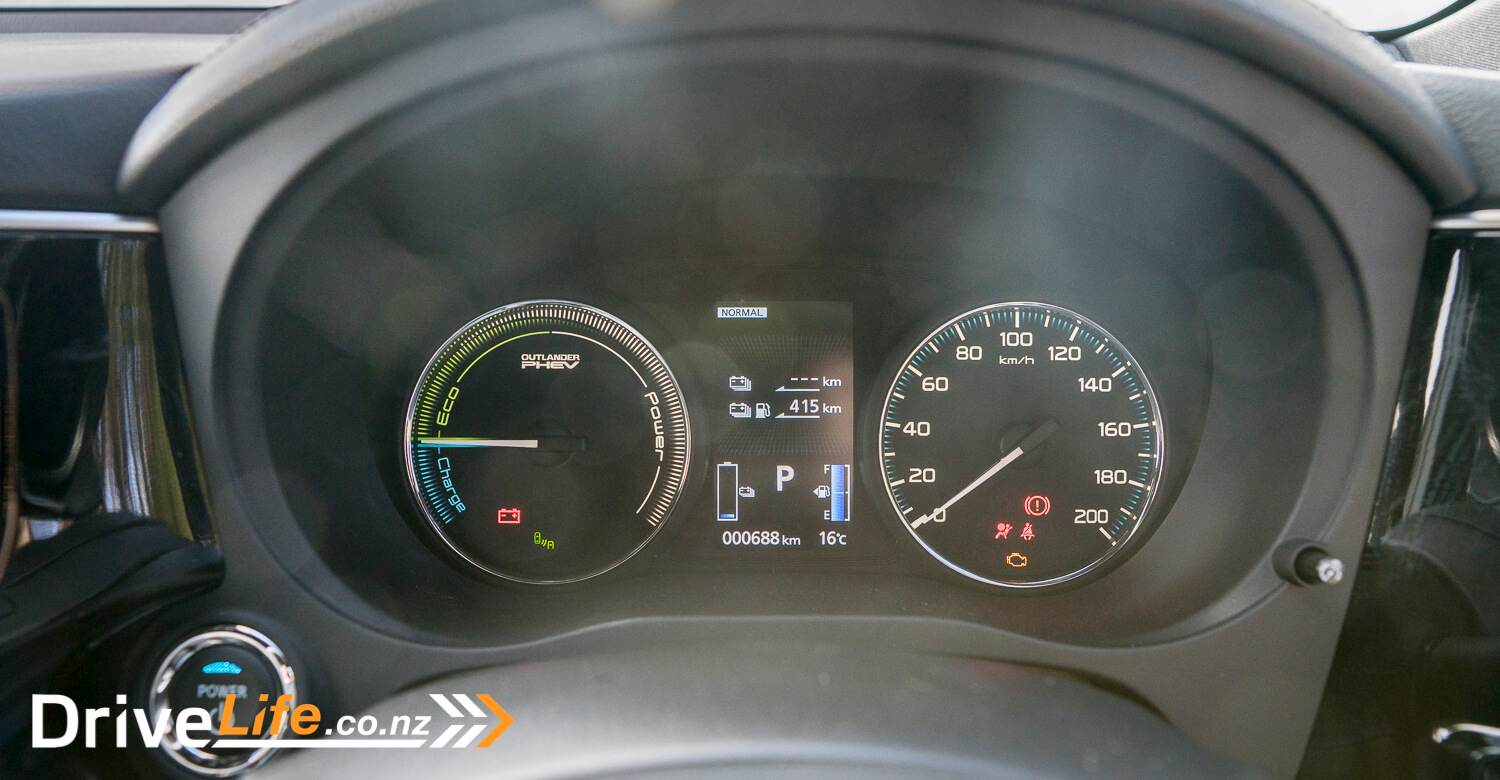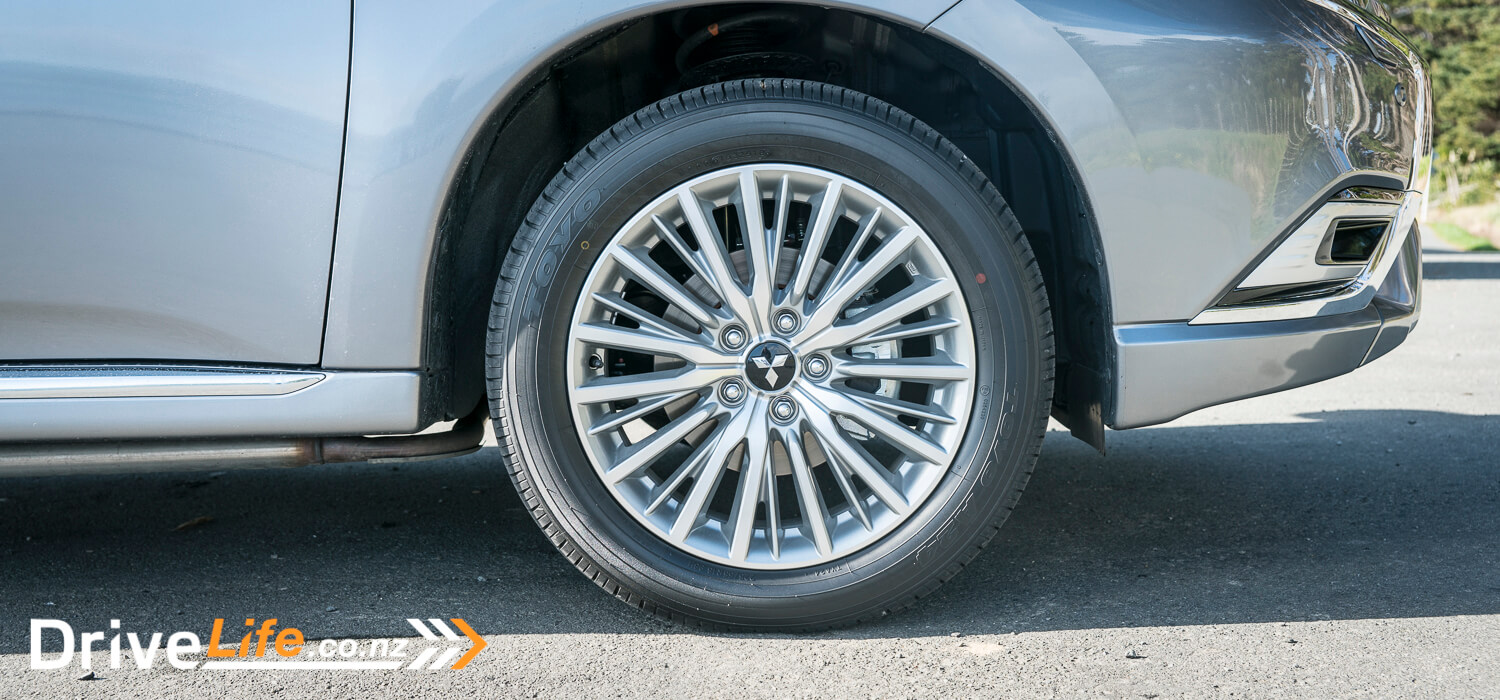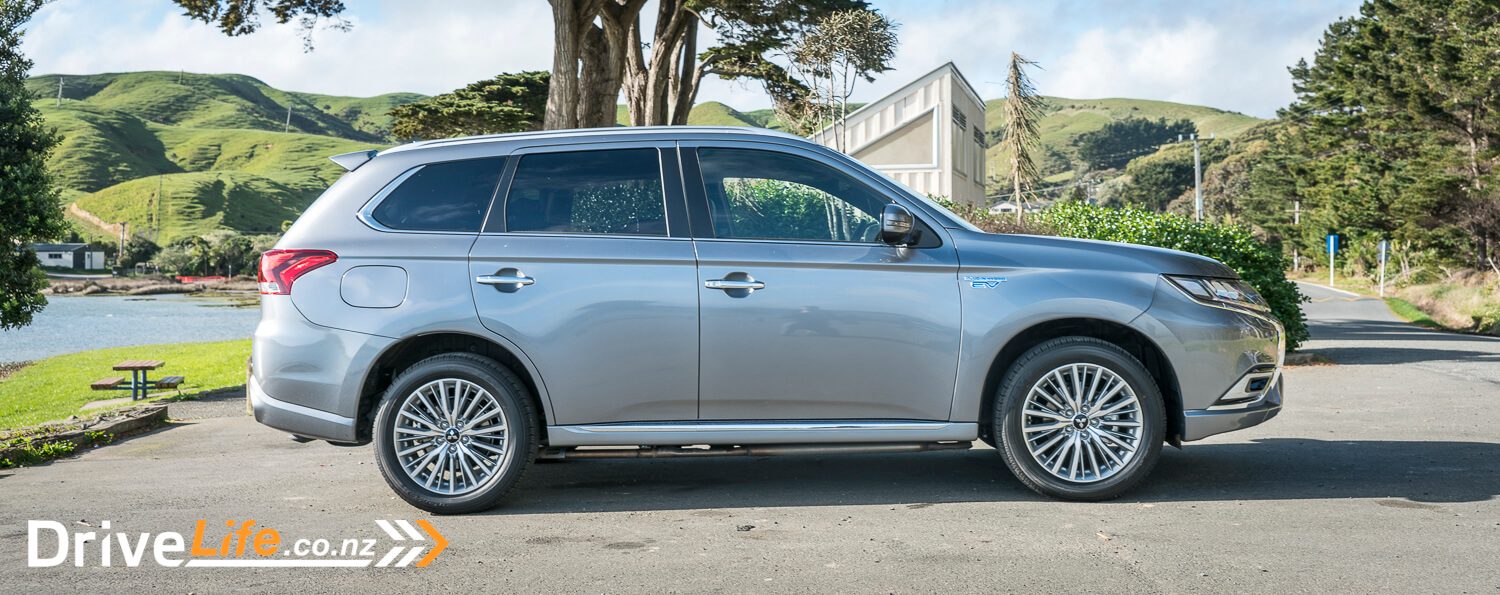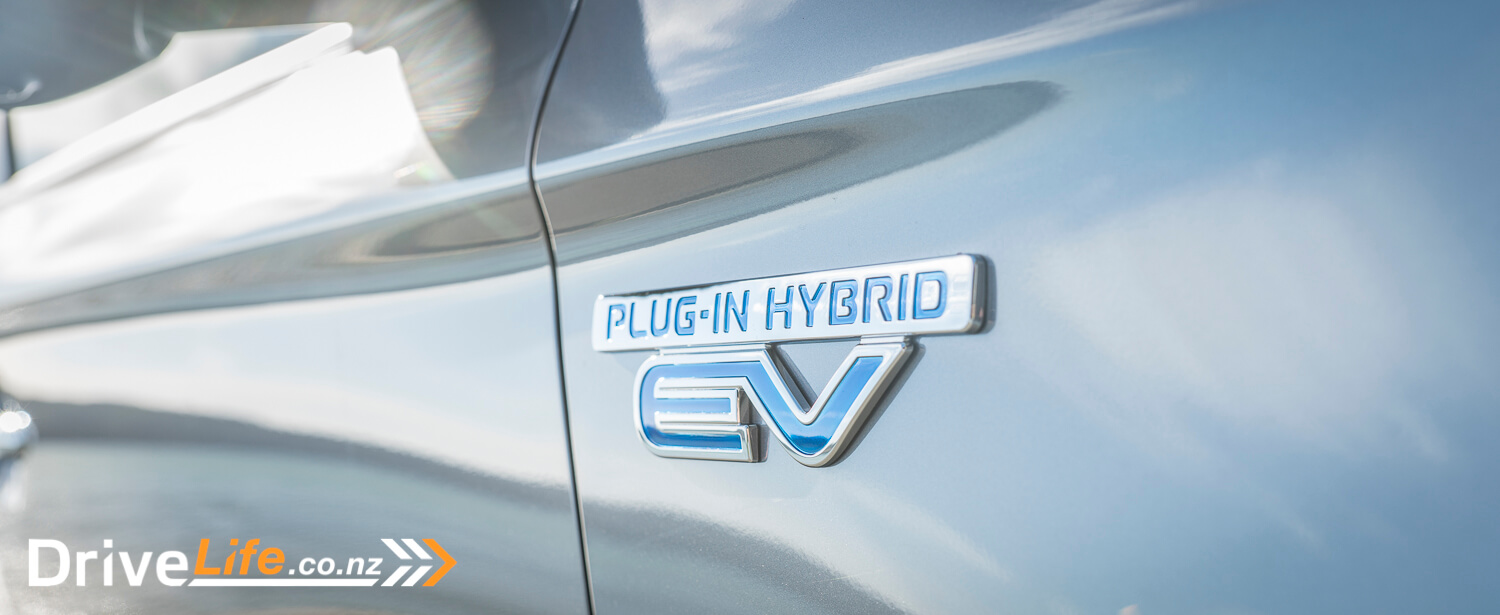Due to some schedule changes, we got the opportunity to be the first in New Zealand to test out the new Mitsubishi Outlander PHEV VRX. It was due for us later in the year and was a vehicle I was looking forward to as the previous model had seen many good reviews and customer feedback.
Would the new VRX improve on the previous model?
The Range
There are two Outlander Phev models available in New Zealand. The Outlander Phev XLS 4WD which starts at $60,990 plus on road costs, and the top of the range model the Outlander Phev VRX 4WD which is on special right now at $55,990 plus on road costs.
Both models share the same drive system and engine, a 2.0-litre DOHC MIVEC Petrol engine that is combined with a Twin motor 4WD hydrive system. The available power is 88kW and torque is 189Nm.
Both of these models are pretty well equipped with the main difference between them being that the VRX comes with leather heated and power assisted seats, LED headlights and LED high beam, power tailgate, front & rear parking sensors, blind spot warning, lane change assist, multi around view monitor, rear cross traffic alert and ultra mis-acceleration mitigation system.
Both the VRX and XLS have a good range of standard safety features, like rear cross traffic alert, adaptive cruise control, forward collision mitigation, lane departure warning and reversing camera. The comfort and convenience feature are push button start, keyless operation with keyless entry, dual zone climate control and rain sensing wipers. Media features include a 7″ Touchscreen SDA System thats Apple CarPlay & Android Auto compatible, bluetooth hands free telephone, 6 speakers and 2 x USB Port and wireless Bluetooth Audio streaming.
First Impressions
Our review SUV was silver which I didn’t mind, and had a pleasing overall appearance. The front grille reminds me of a stormtrooper, possibly a bit over designed. It was much bigger than you imagine for a $55K SUV. The only thing that didn’t sit well with me was the wheel size and design, too many spokes and a bit too small for my liking.
Thankfully it looks no different to the non-hybrid models, which is great to see, as Eco cars don’t need to look spaceage and different.
The Inside
From the front seats you’re greeted with a steering wheel with what feels like a lot of buttons on it. When you look over it, it seems to be your standard array of volume, cruise control, media controls. But it did seem cluttered, and over the week I spent in the Outlander I found it not to be as ergonomic as I would have hoped. Where you expected something to be, it wasn’t. I am sure you would get used to this, but it didn’t feel natural like some other cars do. There was also a few blank buttons, which left me wondering what they could be for since this was the top of the range model?
The driver’s display was pretty well laid out, and simple. On the left you have an Eco rev meter, and on the right you had the speedometer. The speedometer needs no explanation, but the rev meter was split into sections showing when you are charging, using your power in an eco friendly manner or using excessive power. This was great, as it helped you to tweak and control your driving style to make the most of the hybrid setup.
The central console has the one thing that bugged me about the interior – the gear stick. It was a bit odd, in the way that they wanted to make something different just for the sake of it. It was 50/50 for most people in the car, some liked it, some hated it. It worked well, and I never had a problem with it, other then how it looked. The rest of this console had the buttons for full EV mode, 4WD mode, electric park brake and heated seats.
The 7” touch-screen system was designed to look like a phone on its side, or that’s what I felt anyway. I am not sure if this was the intention, but having the menu buttons and volume buttons as touch screen on the sides wasn’t as useful as I thought. There were a lot of menus with bucket loads of info to dig through and utilise for the hybrid system, but the navigation of this system felt a bit clunky, this may have been due to how it looked like a phone. As most of us know, our phones are pretty fluid and interactive these days.
The back seats weren’t cramped either, sitting behind my own driving position, and I must say this is not something that happens often. Everywhere you look in the Outlander, you just can’t help noticing how spacious it is. The rear seats were ok – not as good as the front – my wife described them more like a park bench. She said that it would have been improved with a bit more sculpting, and side support. My baby daughter did enjoy her seating position from the rear facing baby seat. As the seating position was high, this meant her head was now a bit higher than the window level, so she could see out the side and some of the rear window. She thought this was great, and it kept her quieter than normal when traveling around, as she could keep an eye on everything around us.
The boot is noticeably large at 463 litres, which must be up to seat height as it was a much bigger space vertically – much more than expected from a standard 5-seater SUV. Our daughter’s buggy – which can struggle to fit in some cars – went in with loads of space to spare. I really like the additional sunken cubby holes either side of the boot area. These were very handy when we did our food shopping for the week, where we stood up bottles without the risk of them rolling around the boot while driving home.
The boot lid did cause me some complications; how hard can it be I hear you say? Well it was a bit different, if I just used the key, and pressed the boot open button, the boot would open as expected, no drama there. However anytime I pressed the boot button manually to open the boot, I was left having to lift it half way before the powered tailgate took over. Is this a fault, is this human error or is it a safety feature? I am not sure. A friend thought I was being a bit clueless and said he could do it, soon after he was left as puzzled as I was about how it was intended to work.
The Drive
I knew when collecting the outlander Phev that it wasn’t going to be something that is exciting to drive. But I also knew that this was part and parcel with eco efficient driving, the goal here was to see if it was a dull as watching paint dry to live with.
The Phev’s hybrid system is setup to offer a 54km full EV range when charged – this doesn’t seem like a lot. However it’s all down to how you use it, and the Phev gives you a lot of control over this.
When I collected the Outlander Phev, the hybrid battery was drained. This is not normally how Mitsubishi hand over cars, but as this was last minute we took it without their normal preparation. I prefer this, as we can then go straight into doing a full charge on the first night, instead of waiting to drain it and then do a full charge later in the week.
As the battery was drained, this meant that the first day was using the 2.0-litre DOHC MIVEC Petrol engine. It felt good, maybe a touch underpowered, but I expected this due to the drained hybrid battery. I pottered around rather happily without any issues, and that night we went for its first charge.
The next morning the battery was full, with 50km showing on the dash above the 450km fuel range. Now that the battery was full I got to see how the Phev really operates. The gauge on the dash that shows Charge, Eco and Power. These indicate when you’re gaining energy back from braking by charge. When you’re just using the electric mode, Eco. Finally when the engine kicks in, Power. This means you have a lot of control via the accelerator pedal over what power system you use. As this was a Hybrid, the goal was to drive as much as I could in the EV mode. Each day I found I would drain the EV battery to almost flat. This was great, as it meant I was using as much of the electric energy available to the Phev.
The controls you have by the weird gearstick are Charge and Save. These two options allow you to manage your power a bit more efficiently. If for instance you know you have some hills to climb, I found that you’re best to press Save and just use the engine over draining the battery range faster. And when I was on the motorway doing around 100km/h I would select charge. This made the engine work a bit more, while still being efficient at 100km/h as it was now powering the car and charging the battery on the go.
Once I was in the city, I would switch over to full EV mode making sure I use it efficiently through all of the stop-start traffic. It’s an easy setup to use, but you do have to think about it, where it’s best to use and save. But this I felt was part of being an effective eco driver, as couldn’t see how you could have an automated system for this
What really amazed me was how after 4 days I had travelled 600km, and the petrol tank still read 440 km. Each day I had charged up to give me the full 50km-ish range, and each day I did more than that, while never seeming to completely run out of electric power. On the 4th day I had a look at my efficiency, which was 3.3 litres per 100km. That’s impressive, and on each of my journeys between engine start and engine stop I was getting between 0.7 and 0.9 litres per 100km. My average consumption of EV power was 19.7 kWh, which equated to $4.92 in electric power.
The ride is really nice, it’s firm while being comfy, and there is not a huge amount of body roll considering its height. Visibility from the driver’s seat is excellent, and I found myself becoming rather unaware of the size of the Outlander as I navigated from motorway streets to tight city car parks.
On my first Fathers day we decided to go to Staglands for some quality family time. I knew from reviews that Rob Clubley from DriveLife had written in the past, that Staglands had a free EV charge station, which I was hoping to get use of. We set off and by the time we covered the 46.8km to Staglands and had almost depleted the battery. But I knew there would be power at our stop so I did not worry about saving energy. Once we got there, I was devastated to see two petrol cars parked right in front of the EV charger, with no other spaces nearby. Lesson learned, that this is still new tech and regular drivers don’t really take much notice of charge stations.
We parked up and went for a coffee before we went into the reserve. While we were in the cafe, I saw one of the cars parked on front of the EV station leave. Like a bolt of lightning I was out and moved the Phev over so it can be plugged in. The second realisation was when I saw it was not a fast charger. I would just have to hope it charged a bit before we left Staglands.
After a couple of hours we got back into the Phev and the battery read 17km, not what I had hoped, but it was more than nothing. Thankfully it’s not a fully EV vehicle, and we still had the safety of the 420 km range on the petrol tank. But this did show the strife of taking on hybrid or fully EV tech at this time.
On the last day with the Phev, I was almost annoyed at how little fuel I had used. The tank still read 398km, which was three quarters full and I had traveled close to 1000 km. My only thought was that we really need to do a long term test in this, to see how far it goes on one tank.
After the week with the Outlander and a score of 78% on my EV drive ratio, I can happily say that it’s not dull, nor is it weird. You never really feel like you are driving something that limits you, it just feels like a normal SUV, which is great.
What it’s up against
The Phev has had the market much to itself during it last generation, times are changing and there are some other options in the market. However in the price bracket, the Phev does not have too much competition.
Mid SIze SUV
| Brand / Model | Engine | Power Kw/Nm | Fuel L/100km | Seats | Boot Capacity Litres | Price Highest to Lowest |
| BMW X5 xDrive40e | 4-cylinder + electrosynhronous motor | 230kW/450Nm | 3.4 | 5 | 650 | $152,700 |
| Lexus RX 450h | 3.5L V6 with Lexus Hybrid Drive | 230kW/335Nm | 5.7 | 5 | 453 | $114,900 |
| Volvo XC60 T8 Twin Engine | Plug-In Hybrid with 2.0 l4 petrol supercharged and turbocharged |
246kW/440Nm | 2.1 | 5 | 495 | $94,900 |
| Mini Cooper S E All 4 | 1.5L 3 cyclinder with Plug-In Hybrid | 165kW/440Nm | 2.3 | 5 | 405 | $59,900 |
| Mitsubishi Outlander PHEV VRX 4WD | Twin Motor 4WD with Optional 2.0L Petrol Engine | 88kW/189Nm | 1.7 | 5 | 463 | $55,990 |
| KIA Niro Hybrid LTD | Petrol HEV Kappa 1.6L GDi | 104kW/147Nm | 4.4 | 5 | 324 | $43,900 |
| Pros | Cons |
|
|
What do we think?
Electric cars are becoming a more common sight on our roads, and most people would probably be surprised to hear that the PHEV was even an electric hybrid, as it looked so normal. However that’s its party trick: not the look but the hidden tech within.
The Phev was relatively easy to live with, the media system and steering controls felt a bit clunky but I did get used to them. The main things it did well were the day to day tasks: easy to drive, comfortable, spacious, and super efficient.
In my view the Mitsubishi Outlander PHEV is the market leader for hybrid SUVs, bringing great family space and affordability at a great price. Even more so while it’s on special offer from Mitsubishi.
Rating – Chevron rating 4.5 out of 5
2018 Mitsubishi Outlander PHEV VRX 4WD
| Vehicle Type | All wheel drive Hybrid Electric SUV |
| Starting Price | $55,990 |
| Tested Price | $55,990 |
| Engine | 2.0-litre DOHC MIVEC Petrol |
| Transmission | Twin motor 4WD with optional petrol engine engagement (Parallel Hybrid Mode) |
| Kerb Weight | 1860 kg |
| Length x Width x Height | 4695 x 1800 x 1710 mm |
| Cargo Capacity | 463 Litres
1022 Litres with rear seats down |
| Fuel Tank | 45 litres |
| Fuel Efficiency | Advertised Spec – Combined – 1.7 L / 100km
Real World Test – Combined – 3.3 L / 100km |
| ANCAP Safety Ratings | 5 Stars |


